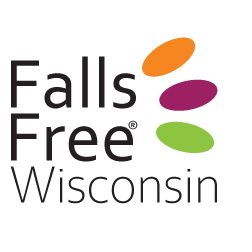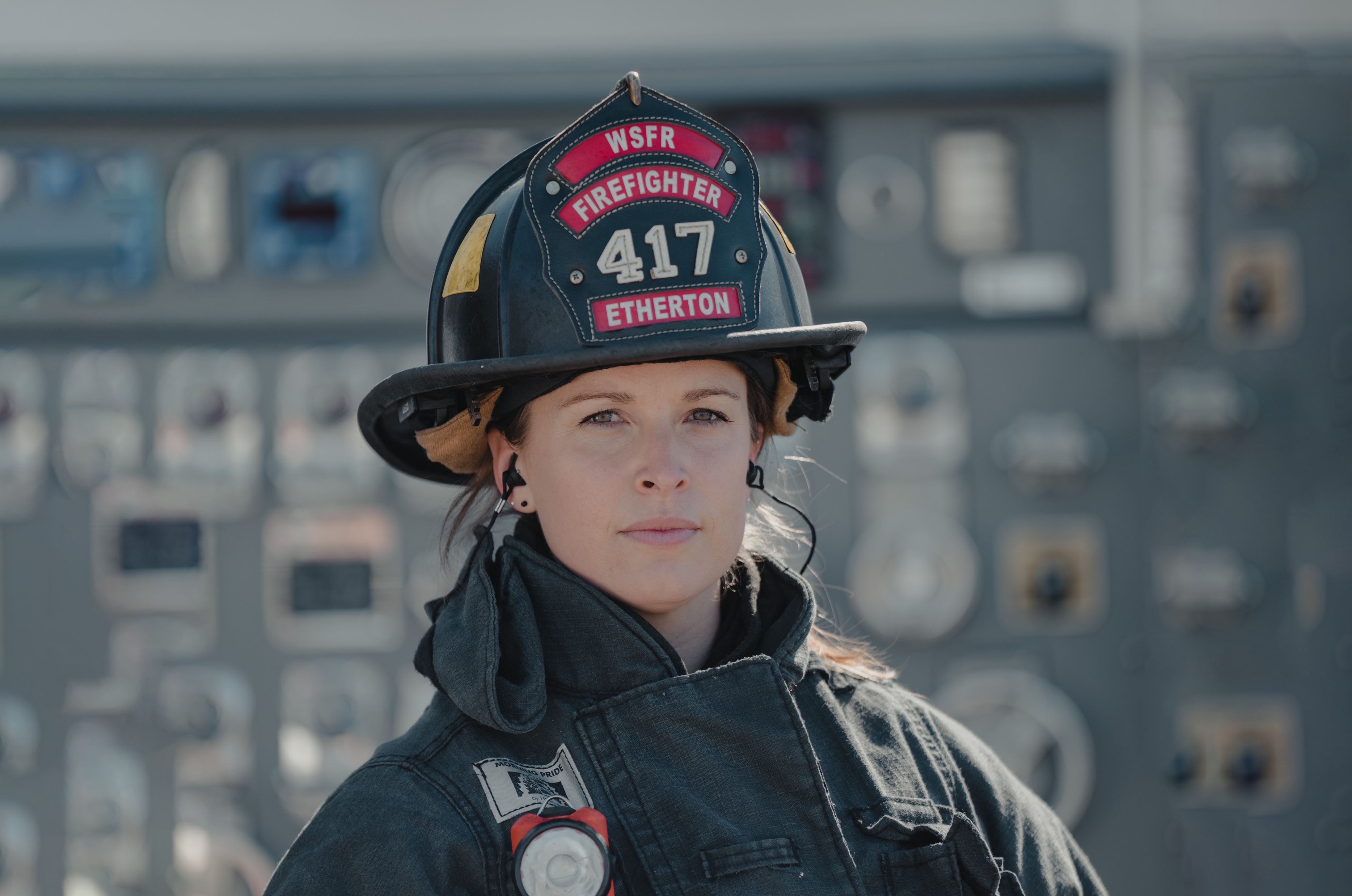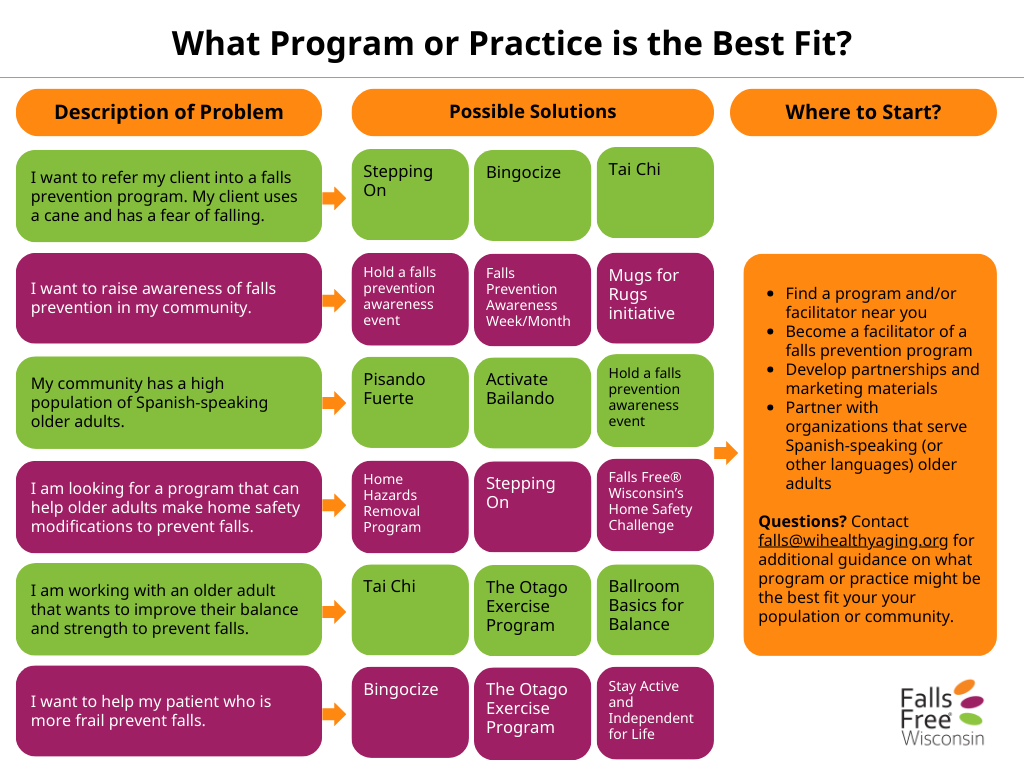Professionals in the Community
Professionals from medical providers to volunteer firefighters to health educators and everything in between can play a role in preventing falls.
Why should you care? Because reducing falls risk can reduce fall-related hospitalizations and injuries, such as hip fractures or traumatic brain injuries, reduce healthcare costs and improve the lives of older adults.
Check out the EMS-CBO Toolkit to see how community-based organizations can partner with local EMS on falls prevention efforts.
Click on the following dropdowns to see what you can do to help prevent falls in the community:
Develop a policy to provide a falls risk screening, such as CDC’s STEADI, for older adult patients annually and ensure patients at higher risk for falls are followed up with
Engage an occupational or physical therapist in your patients’ care
Refer your patients to a pharmacist for a medication review
Refer your patients to an evidence-based falls prevention program such as Stepping On
Understand the link between chronic conditions and fall risk
Screen your patients for hearing loss (Interacting with Individuals who are Deaf or Hard of Hearing) and dizziness
Discuss alcohol-use and the potential risks of alcohol and falls with your patients using a validated alcohol screening tool
Share information from the falls risk screening and medication review with your client and their primary care provider
Educate your clients on how certain medications can increase their risk of falling
Refer patient to an evidence-based falls prevention program such as Stepping On
Partner with your local county or tribal aging unit, Aging & Disability Resource Center or healthcare system to develop a referral system for lift assist calls that you respond to. Consider using systems like ImageTrend or Jotform for referrals or implementing a Community EMS Program. Contact your Regional Trauma Advisory Council (RTAC) if you are interested in using Jotform or ImageTrend in your community.
When responding to lift assist calls, provide falls prevention resources before leaving
Engage in community programming for falls prevention, such as Stepping On or Mugs for Rugs
Referral System Example – Brown County
1. EMS & ADRC Falls Prevention Referral Process
2. High-Level Process
3. Sample Consumer Letter
Provide a home assessment for patients to identify falls risk hazards and work with patients to mitigate those risks
Evaluate patients’ falls risk and provide personalized interventions to improve physical function to reduce falls risk
Work with health systems to ensure referral policies are in place when a patient is identified as being at higher falls risk
Educate patients on how to use assistive devices correctly
Build patients’ confidence in performing their activities of daily living. By building confidence, this may help reduce the fear of falling that some older adults have
Develop a local falls prevention coalition
Consider becoming a program provider or facilitator of an evidence-based falls prevention program like Stepping On
Host community awareness events and campaigns during National Falls Prevention Week/Month in September
Collect falls data to show the impact that falls have in your community
Educate the public about the importance of falls prevention and how to reduce falls risk
Partnering with Public Safety Departments to Prevent Falls
Developing the Capacity to Support Older Adult Falls – NACCHO Resource for local health departments
Falls Prevention Awareness Day Example – Portage County
1. Postcard
2. Event Ticket
3. Placemat – also used as a Facebook post!
Follow the Americans with Disabilities Act guidelines for resident safety
Have a policy/procedure in place and ensure employees and family members know what to do in case a fall occurs – call 911 if needed, check vitals, discuss prevention of future falls, etc.,
Hold falls prevention educational programs – like a Stepping On workshop (for independent living facilities only)
Post signs for residents throughout the facility with falls prevention tips on topics such as:
-Proper footwear
-Proper lighting (especially for bathroom trips at night)
-Using assistive devices like canes and walkers – Don’t forget your walker!
-Slow and steady wins the race
-Call for help, don’t have a fall!
-Reach back for the chair before you sit
-Always have 3 points of contactProvide resources for incontinence and bladder control exercises/strategies – consider offering a Mind Over Matter: Healthy Bowels, Healthy Life workshop
Ensure caregivers and family members have the resources they need to start the conversation about falls prevention
Consider completing falls risk assessments prior to admission or if there is a change in the resident’s condition
Help residents access resources such as occupational or physical therapy, medication reviews, exercise programs, vision exams, etc.,


